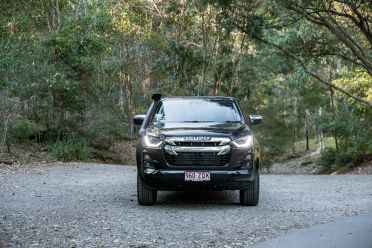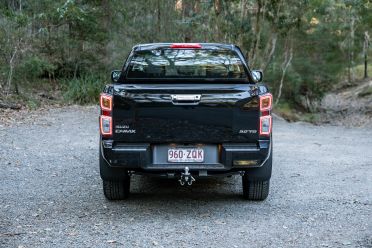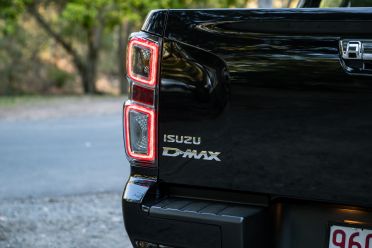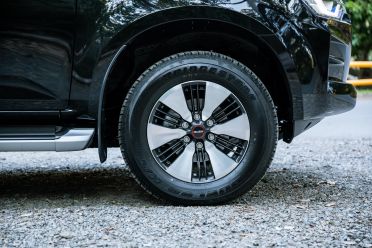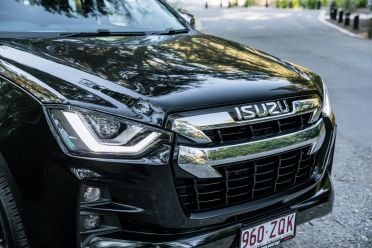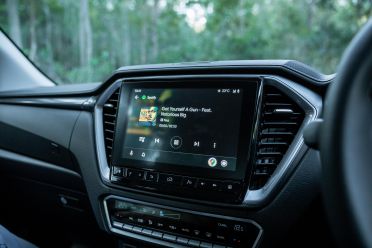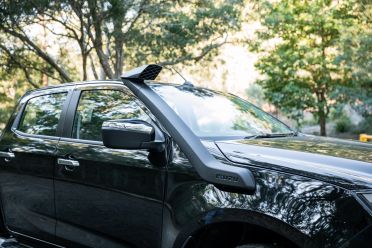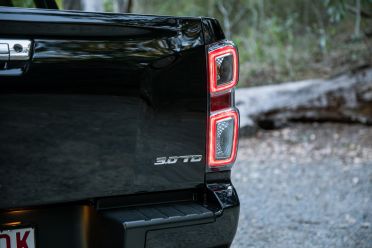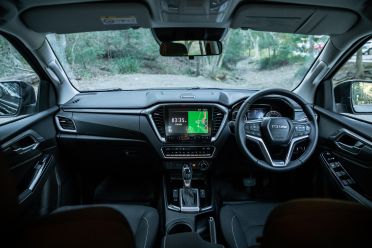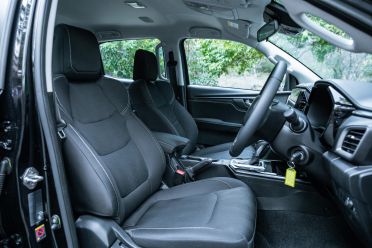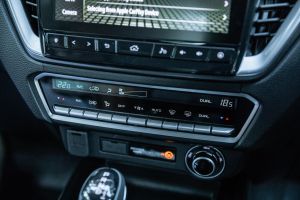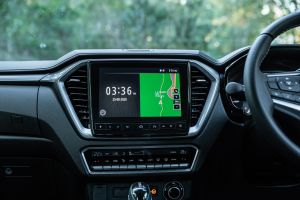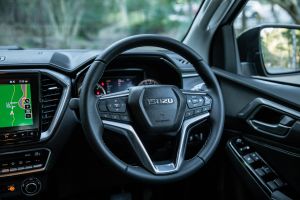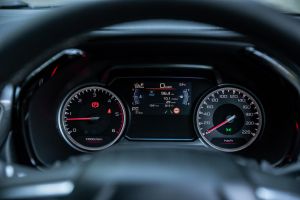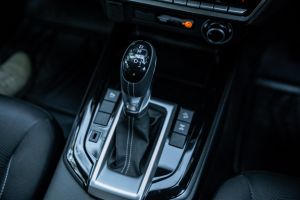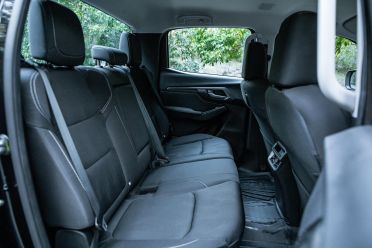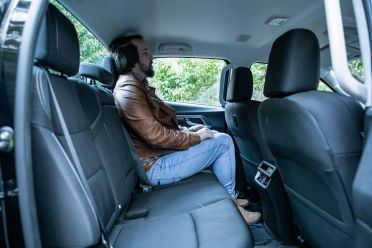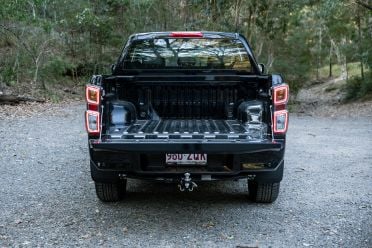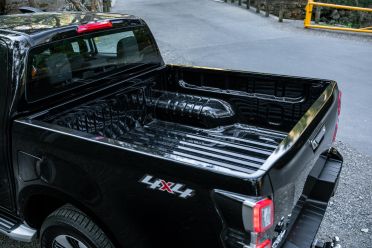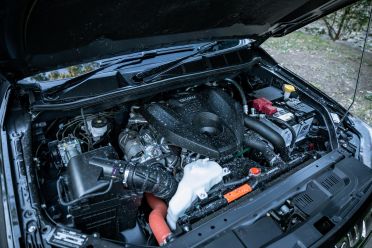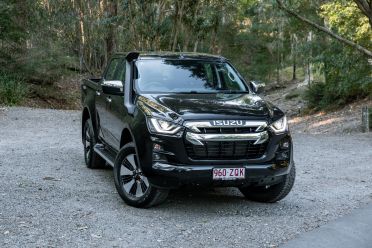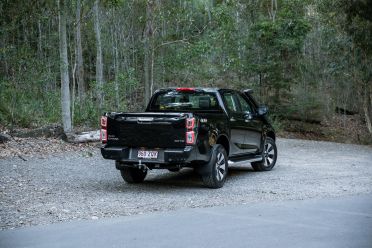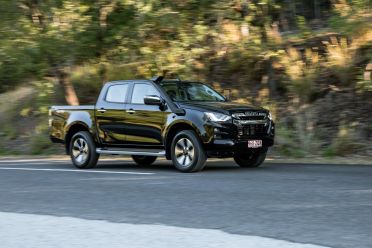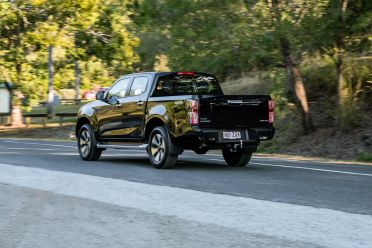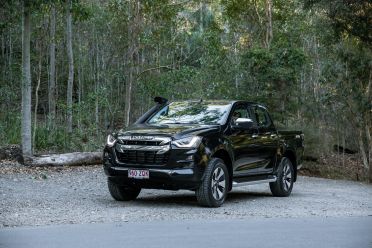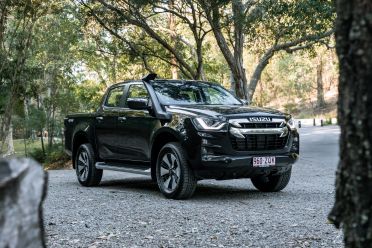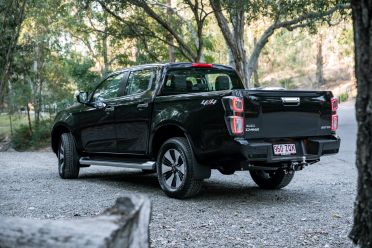Isuzu Ute Australia may only be 12 years old but Australian consumers have been buying Isuzu products for a lot longer.
Holden first started rebadging the Isuzu Faster as the Rodeo back in 1980, and Isuzu and GM remained close over the years. The outgoing second-generation Isuzu D-Max, for example, was co-developed with General Motors and shared its underpinnings with the Holden Colorado.
With this all-new Isuzu D-Max, however, there’s no longer any GM affiliation. In fact, there’s no longer any GM competition, with the Colorado dying in Australia along with the rest of the Holden brand. That leaves a great opportunity for Isuzu to steal some of its former cousin/rival’s market share and continue to rise up the ranks in the ute segment.
Last year, Isuzu shifted less than a third of the Ranger and HiLux 4×4’s volume with its D-Max 4×4, though it was only a few thousand units shy of stealing third place from the Holden Colorado. In the 4×2 segment, however, Isuzu was only outsold by Toyota by around two-to-one and enjoyed second place in the segment.
The new Isuzu D-Max range offers six different 4×2 models and 14 4×4 models, with a choice of single and crew cab chassis and space cab and crew cab ute bodies available with each drive type.
Isuzu’s made more of an effort to challenge those profitable up-spec 4×4 sales that help give the Ford Ranger so much momentum, introducing a range-topping X-Terrain trim. The LS-U we tested may prove more popular, going head-to-head with the Ford Ranger XLT and Toyota HiLux SR5.
The new D-Max is a handsome thing, particularly in penultimate LS-U trim. Ute rears tend to broadly look the same because there’s only so much you can do, and if you get too adventurous it can backfire (the outgoing Mazda BT-50, for example). Isuzu’s designers have penned a surprisingly aggressive rear end, however, with distinctively-shaped tail lights and sharp creases in the tailgate.
The front is unmistakably D-Max yet slightly more aggressive than before, with LED daytime running lights that resemble the eyes you see glowing in the jungle night shortly before you’re pounced upon and mauled.
In a segment that values tough looks, the D-Max should appeal.

How much does the Isuzu D-Max cost?
D-Max prices are up by several thousand across the board with the redesigned model. The LS-U Crew Cab auto is priced at $56,900 before on-road costs, a considerable $6000 more than last year’s model.
Despite the price increase, however, the D-Max still undercuts similarly-specified rivals like the Toyota HiLux SR5 Double Cab ($59,920 before on-roads) and Ford Ranger XLT 3.2 Double Cab ($59,440).
What do you get?
The huge price jump is largely justified by how much more equipment you get in every D-Max.
Every single D-Max model adds what Isuzu calls the IDAS suite of features. This comprises autonomous emergency braking, forward-collision warning, turn assist, traffic sign recognition, lane-departure warning, lane-keeping assist, blind-spot monitoring, rear cross-traffic alert, and adaptive high-beam.
We’ll have to wait and see if D-Max sales suffer as a result of higher pricing. Extra safety is often harder to sell than extra performance or sex appeal, and this equipment will be unfamiliar to owners of the outgoing D-Max, which lacked any of these items.
This is a massive leap for Isuzu, especially considering the old D-Max lacked even commonplace convenience features like automatic headlights.
The new D-Max also shades key rivals like the Ford Ranger and Toyota HiLux. Previously, the Ranger was the safety star of the segment with AEB, traffic sign detection, lane-departure warning and lane-keeping assist standard across the board.
Then along comes this D-Max with standard blind-spot monitoring and rear cross-traffic alert, items that aren’t even optional on the Ranger. You’ll find those two items on the Mitsubishi Triton GLS, though, which also boasts a list price of $47,940 before on-roads.
For the LS-U’s substantial list price, you get a reversing camera, dual-zone automatic air-conditioning, power windows (one-touch up/down for the driver’s), automatic bi-LED headlights and rain-sensing wipers. The steering wheel finally tilts and telescopes, too. Little miracles.
Over lesser D-Max models it also adds a 9.0-inch touchscreen infotainment system with wired Android Auto, wireless Apple CarPlay and satellite navigation, instead of the 7.0-inch unit in the SX and LS-M.
It also adds upholstery on the doors, a leather-wrapped steering wheel, rear parking sensors, dual-zone climate control, an eight-speaker sound system, power-adjustable lumbar support for the driver’s seat, carpeted flooring and front vanity mirrors, though they aren’t illuminated.
The 18-inch wheels are the same as you’ll find in the flagship X-Terrain, just without the entirely black finish – we think they’re all the better for it, but you may prefer the black wheels.
There are some puzzling omissions, however. Surprisingly for a trim level just one rung from the top, there’s neither proximity entry nor push-button start, while the key isn’t even a switchblade-type one.
Is the Isuzu D-Max safe?
The 2021 D-Max has yet to be tested by ANCAP, though it’s made all the right moves in terms of spec to earn itself a five-star rating. The outgoing model received a five-star rating back in 2013, though that was before AEB was required. We’ll update this review and add a safety score once its ANCAP result has been published.
In addition to its suite of active safety features, all D-Max models also include dual front, curtain, side, driver’s knee and far side airbags, for a total of eight in the cabin, as well as features like trailer sway control. There’s also a centre airbag that sits between the two front seats – a first in this segment.
The D-Max’s AEB works between 8-160km/h, while its Turn Assist functions if your indicator is on, you’re travelling under 18km/h, and the oncoming vehicle is travelling at 40km/h or more.
What is the Isuzu D-Max like on the inside?
This might just be the nicest cabin in the segment, at least for now.
We love the soft-touch dash top with its stitching details, while the LS-U’s use of upholstery on the door trims is a nice touch and helps break up the hard plastic there. The metal-look switchgear below the touchscreen also looks good and is pleasantly tactile.
The front seats are delightful. They’re comfortable and have surprisingly pronounced bolstering for ute seats. They’re also upholstered in black cloth with a subtle yet somewhat trippy pattern to it.
The 9.0-inch touchscreen is the biggest in the segment by an inch, though SX and LS-M models make do with a 7.0-inch unit that’s smaller than the likes of the Ford Ranger. The LS-U and X-Terrain also have the edge in terms of connectivity, boasting wireless Apple CarPlay in addition to wired Android Auto. Satellite navigation and DAB digital radio are also standard.
The infotainment system boasts quick response times and legible navigation and menu graphics, though its layout could be more intuitive. The shortcut buttons on the screen are very small but we like the use of physical shortcut buttons beneath the screen.
A pity the navigation prompts can be annoyingly frequent, as though geared for a driver dealing with some kind of Memento-type situation. You’ll also notice almost everything makes a sound when you press it, with volume adjustments sounding like a game of Space Invaders. Thankfully these warnings and beeps can all be switched off.
The lower glove compartment only has room for the owner’s manual, which is literally of biblical proportions.
However, there’s other storage available, including a centre console bin, an upper glove compartment, decently-sized bottle holders in each doors, a mobile phone tray at the base of the centre stack, and a shallow tray with a lid on the dash top that can fit a wallet, phone and sunglasses. There’s a sunglass holder on the ceiling, too, and it has a lining to prevent annoying rattling.
Neat, too, are the cupholders on both sides of the dash that pop out from beneath two of the air vents. They should help keep your beverage either cold or relatively warm.
Speaking of cupholders, the two in the centre console are different shapes – one’s shaped like a D, the other is circular. Perhaps that’s ideal if you drink your iced coffee out of a bottle but your offsider drinks one of the carton brands.
The back of the cabin is suitably spacious for this class with scads of headroom. Amenities include rear air vents, a single USB outlet, map pockets in the upholstered seatbacks, and bottle holders in each of the doors.
There are also two top tether and ISOFIX anchor points to secure your children, plus a little fold-out hook built into the passenger seat back on which to hang a bag.
The eight-speaker sound system includes some speakers in the roof, though the overall sound quality is middling. Bass is quite good but music can sometimes sound a little washed out.
If there’s one aspect of the D-Max’s cabin that needs work, it’s the multi-information display in the instrument cluster. Measuring 4.2 inches, it looks lost in a fairly large void between the gauges and its fonts and icons can be hard to read. It’s also awkward to navigate, with the steering wheel controls lacking a back button.
The tub measures 1570mm long, 490mm deep and 1530mm wide, narrowing to 1122mm between the wheel arches. That makes it about as long as a HiLux’s, 9mm deeper, but 115mm narrower overall.
Unlike a Ford Ranger, you won’t find a power outlet back there.
What’s under the bonnet?
All D-Max models use a 3.0-litre turbo-diesel four-cylinder engine, called 4JJ3-TCX, which produces 140kW of power and 450Nm of torque. It’s mated to either a six-speed manual or six-speed automatic transmission. Unlike most of its rivals, Isuzu doesn’t bother with a less powerful entry-level engine in Australia.
Outputs are up by 10kW and 20Nm over the 4JJ1 engine used in the outgoing D-Max, while braked towing capacity is unchanged at 3500kg. Payload is 1055kg.
In our testing, we recorded a 0-100km/h sprint of 10.42 seconds and a 60-120km/h time of 10.52 seconds.
Isuzu claims a combined fuel economy rating of 8.0L/100km. We managed 10.1L/100km in a mix of highway and city driving.
How does the Isuzu D-Max drive?
The ute segment is all about incremental improvements which explains why ladder-frame construction and rear drum brakes persist – if it ain’t broke, don’t fix it.
If you were expecting a completely different driving experience than any ute before it, you’re in for a shock. The D-Max is an improvement over its predecessor but not a significant advancement of the ute breed overall and it can be a little jiggly and unsettled, though it doesn’t buck and heave over undulations and it’s one of the more comfortable options in its class.
The 3.0-litre diesel isn’t lacking for grunt. It works well in concert with the six-speed automatic but it’s no symphony to listen to, sounding just as gruff as a Mitsubishi Triton and slightly noisier than a HiLux. There’s still some clatter at highway speeds, even as the engine sits at 1500 rpm.
There’s a bit of road noise that enters the cabin at such speeds too, though the snorkel fitted to our tester undoubtedly contributed to wind noise.
The new electrically-assisted steering is a touch light but it helps the D-Max feel slightly less cumbersome than its outsize dimensions suggest, especially in tight inner-city settings. The wheel itself is also a lovely, leather-wrapped thing, and feels much nicer than that of a HiLux.
Perhaps a bigger surprise on the road, at least for owners of the outgoing D-Max, is the integration of all the new active safety technology. This truck will bing and bong far more than D-Max owners will be used to.
The first thing you’ll want to do is turn off the overspeed alert that works with the (generally quite effective) traffic sign recognition. As soon as you go 1-2km/h over the speed limit, it’ll ding. Annoying.
Isuzu offers a raft of lane-related safety nannies. Technically, there’s lane-departure warning, lane-departure prevention, lane-keeping assist and emergency lane-keeping. Lane-keeping assist is rare for this segment and works when you activate the adaptive cruise control.
While the cruise works well, the lane-keeping assist doesn’t, though Isuzu isn’t the first automaker to employ a system that intervenes too late and has a tendency to ping-pong you within a lane.
I think we all know somebody who drives a ute like it’s a Formula 1 car. They’re going to be startled in the new D-Max by the new forward-collision warning, which lights up a bar at the base of the windscreen inside the cabin.
In its default mode, it went off more frequently than other forward-collision warning systems we’ve experienced. It alerted me as I’d pull up at traffic lights or when a vehicle entered the lane ahead of me, even if I adopted a calmer driving style than usual.
Fortunately, the AEB didn’t activate when it wasn’t supposed to and you can switch the FCW to a more forgiving mode.
Otherwise, all the active safety tech works as it’s supposed to, including the lane-departure warning which sends vibrations through the steering wheel as though you’ve driven over a rub strip.
If you’re heading off the beaten track, all 4×4 D-Max models feature a rear differential lock and a choice of two-wheel drive, four-wheel drive High and four-wheel drive Low modes. Approach and departure angles are 30.5 and 24.2 degrees, respectively, compared to 30 and 22.7 degrees in the old D-Max LS-U.
How much does the Isuzu D-Max cost to run?
The D-Max requires servicing every 12 months or 15,000km, whichever comes first. Isuzu offers seven years of roadside assistance, a six-year, 150,000km warranty, and seven years of capped-price servicing. These will cost you $389, $409, $609, $509, $299, $749 and $409, respectively, or $3373 all up.
That works out better than with the HiLux, which hobbles you with servicing appointments every six months. Mitsubishi and Ford only offer three and five years of capped-price servicing, respectively.
CarExpert’s take on the Isuzu D-Max LS-U
The D-Max is a costlier proposition than it was before but in terms of technology, it’s a quantum leap over its predecessor.
That isn’t just in the realm of convenience features like automatic headlights, either. The amount of safety technology Isuzu has added to the D-Max is staggering compared to the old model, pushing it to the top of the class in terms of standard safety equipment.
If cost is your primary consideration, the D-Max isn’t quite as alluring as before. And even if a safe ute is your top priority, you’ll find many of the features in Isuzu’s IDAS suite standard in the Mitsubishi Triton GLS, which comes in at almost $10,000 less.
Isuzu may still undercut the top dog HiLux and Ranger but it’s no longer the bargain proposition it once was.
Nevertheless, Isuzu’s new D-Max offers a lot of bang for your buck and boasts the nicest cabin in its class (for now) while matching key rivals in performance and drivability. Isuzu may have gone its own way with the latest D-Max but it’s taken the right path.

